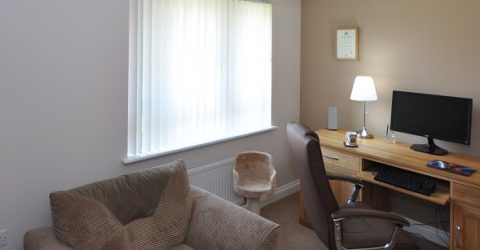How to set up a home office

The internet has had a seismic effect on modern living, and nowhere more so than in the growth of flexible working arrangements.
Cloud hosting, video calling and collaborative software tools make it easier than ever to be productive outside the office.
This has reduced the necessity for rush-hour commuting, face-to-face meetings and long days spent in windowless offices saving documents onto a C drive nobody else can access.
Remote working increases employee morale, providing greater flexibility for childcare and other family duties.
Mental health benefits include lower risk of staff experiencing stress, depression or anxiety.
Employers benefit from greater staff loyalty and retention, lower office space and IT overheads, and an average increase in productivity of 16 per cent.
Maintaining professionalism
However, these benefits will only be fully realised if employees have set up a home office to serve as an alternative workplace environment.
Productivity will be far lower if people are working in bed in their pyjamas, or balancing a laptop on the arm of the sofa while children rampage around.
It will also drop without access to key peripherals, adequate storage and other factors which are easily overlooked in the enthusiasm to escape the rush-hour tyranny.
So what elements do you need to set up an efficient and effective home office?
Tools of the trade
A private workspace. A dedicated room isn’t vital, but you do need a quiet space to set up a home office, with enough room to work comfortably for hours on end.
Look for an environment that will be empty during the day (guest bedrooms are ideal), with minimal interruptions or noise. Use sound-cancelling headphones if peace is hard to find.
A dependable broadband connection. Home working isn’t viable without a decent internet connection, for uploading files and accessing cloud-hosted programs.
Your work computer should be hardwired into the broadband router with an Ethernet cable or a Powerline adaptor, rather than being connected across WiFi – which is slower and flakier.
Peripherals. To work effectively for 35 hours a week, you’ll need a large high-definition monitor, a full-sized keyboard and a mouse – even for a laptop computer.
An all-in-one printer and scanner is vital, while docking stations enable a laptop to be quickly connected to a bank of peripherals. Always pay a bit more for high-quality hardware.
Effective lighting. The importance of lighting can’t be overstated, reducing eyestrain and headaches while improving moods and preventing Seasonal Affective Disorder.
Try to position the desk beside a large window, with an adjustable spotlight and a full spectrum lamp. If possible, avoid claustrophobic internal areas like cupboards or basements.
Storage. Every home office needs desk space for notepads and pens, shelves for important books and documents, drawers for charging cables and data keys, etc.
Avoid cheap plastic or glass-topped desks in favour of solid units with built-in cupboards and drawers. Wall units lined with foolscap storage boxes let you find paperwork quickly.
A supportive chair. Sitting in an unnatural stance leads to neck strain, back problems and even issues with headaches and vision, so a well-designed chair is crucial.
A smaller chair will tuck away under a workbench or desk, but ensure it has armrests and an adjustable back. Don’t buy a chair online unless you’re certain it’ll be comfortable all day.
A breakout space. You might be able to fashion a workspace within an alcove by positioning shelves between the walls, but it won’t give you room to think.
If someone comes over for a meeting, can you sit in a living room or conservatory? If you need to pace while deliberating, where can you go?
A lack of distractions. Offices are designed to keep employees focused on their jobs, so work environments around the home also need to be interruption-free.
Avoid working beside games equipment, a large TV or a bookshelf, where procrastination is in your line of sight. Try to ensure family members and pets won’t interrupt too often, either.
Choose neutral décor and accessories. Strong colours can be distracting or draining, so stick with calmer tones like soft pastels or relaxing shades of blue and grey.
Don’t set up a home office filled with family photos or Newton’s Cradles, because every item in your field of vision ought to justify its presence. Clutter is the enemy of productivity.






